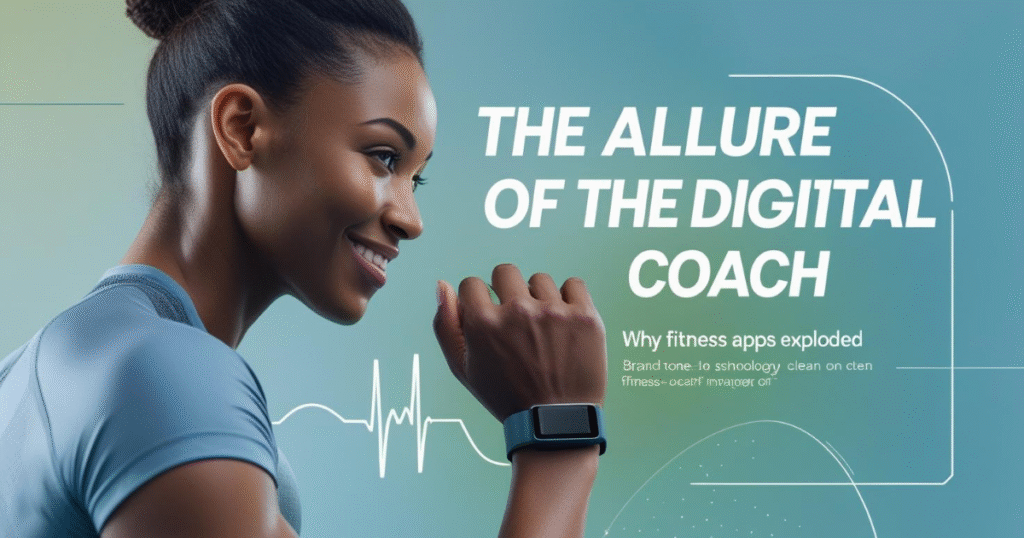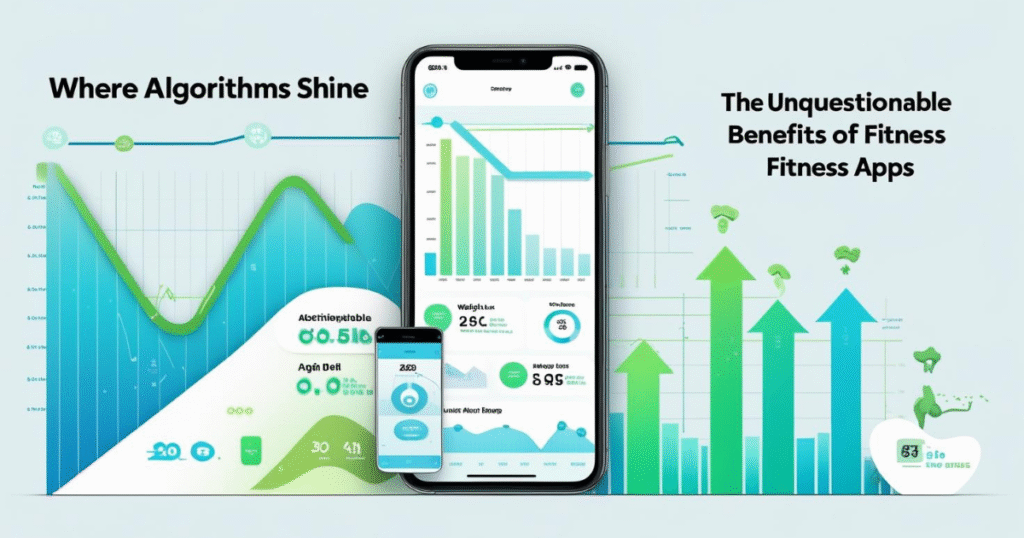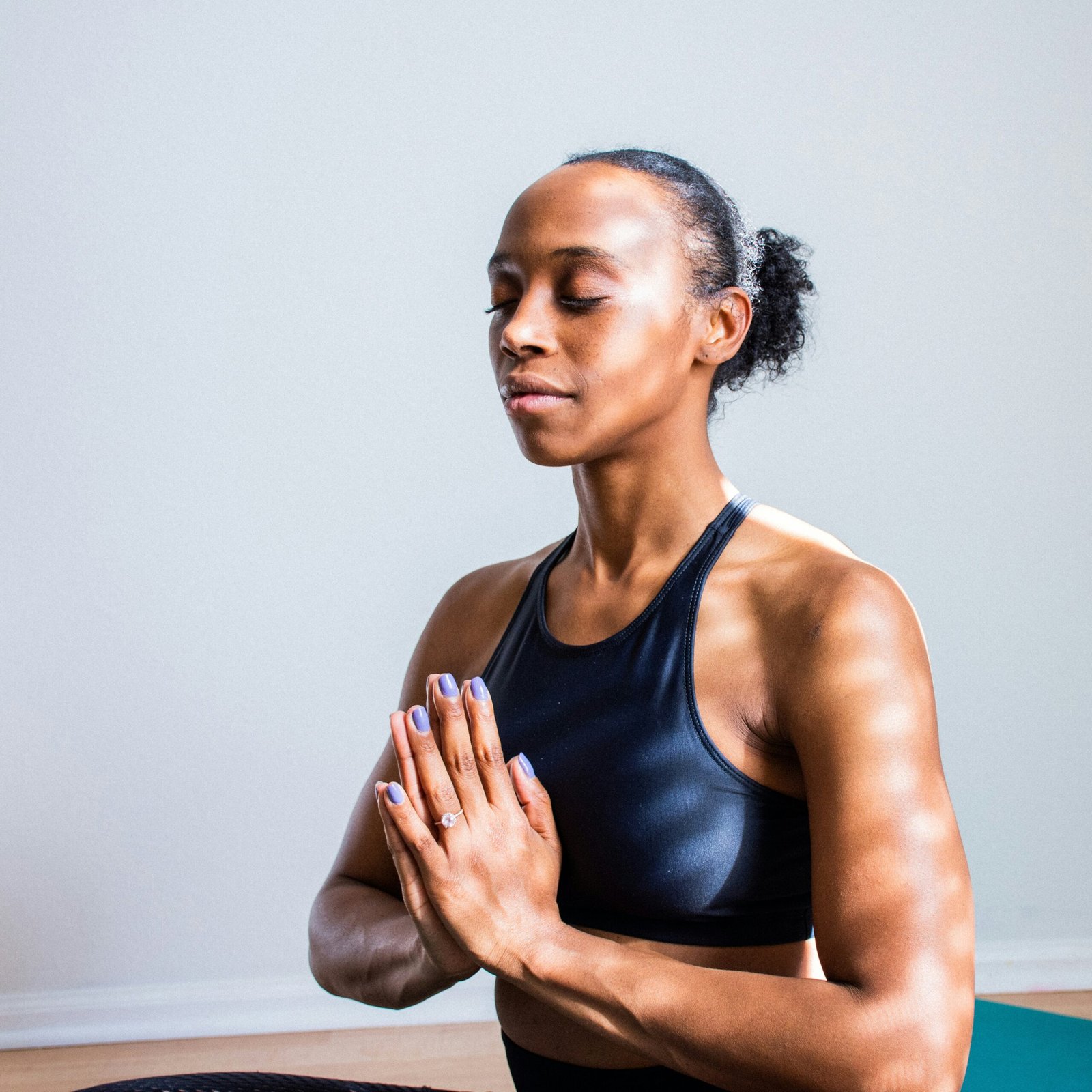In an increasingly digitized world, our lives are shaped by algorithms, from the content we see to the products we buy. It’s no surprise, then, that Fitness Apps have also become deeply intertwined with digital intelligence, revolutionizing personal fitness. The promise of Fitness Apps is tantalizing: a smart coach in your pocket, personalized workouts, nutrition plans, and progress tracking, all orchestrated by lines of code designed to optimize your journey to a healthier you. But the burning question remains: Can Algorithms Make You Fit? The Truth About Fitness Apps is far more nuanced than a simple yes or no.
Millions have downloaded fitness apps, lured by the convenience, the data, and the seemingly scientific approach to well-being. These digital companions offer everything from calorie counting and step tracking to AI-powered workout generators and virtual personal trainers. Yet, despite the widespread adoption, the landscape is littered with abandoned subscriptions and forgotten fitness goals. So, are these algorithms truly the silver bullet to our fitness aspirations, or are they just another digital distraction?
This comprehensive guide will delve deep into the world of fitness apps, exploring their underlying mechanics, their undeniable advantages, and their inherent limitations. We’ll uncover the psychological factors at play, distinguish between genuine progress and mere data points, and ultimately equip you with the knowledge to leverage these powerful tools effectively. If you’ve ever wondered whether your smartphone can genuinely transform your physique and health, prepare to get the unvarnished truth about whether Can Algorithms Make You Fit? The Truth About Fitness Apps reveals the keys to lasting success.
The Allure of the Digital Coach: Why Fitness Apps Exploded
The rapid proliferation of fitness apps isn’t accidental. They tap into several fundamental human desires and address common barriers to fitness:
- Convenience & Accessibility: No gym membership required, no fixed class times. Work out anywhere, anytime.
- Personalization (Perceived): The promise of a plan tailored just for you, adapting to your progress and goals.
- Data & Tracking: The human fascination with numbers. Apps quantify calories burned, steps taken, sleep quality, and more, offering a seemingly objective view of progress.
- Gamification: Badges, streaks, leaderboards, and virtual rewards make the fitness journey feel like a game, appealing to our competitive instincts.
- Cost-Effectiveness: Often cheaper than a personal trainer or specialized classes.
- Motivation & Nudges: Reminders, notifications, and encouraging messages aim to keep you on track.
- Social Connection: Many apps offer community features, allowing users to share progress, compete with friends, and find support.
These compelling features have propelled fitness apps into a multi-billion dollar industry, transforming how many approach their health goals.

The Mechanics of the Algorithm: How Fitness Apps (Claim to) Work
At their core, fitness apps employ algorithms to process data and deliver recommendations. This data can come from various sources:
- User Input: Your age, weight, height, gender, activity level, dietary preferences, and stated fitness goals.
- Wearable Devices: Data streamed from smartwatches (Apple Watch, Garmin, Fitbit), heart rate monitors, and smart scales.
- Tracking Sensors: GPS for running/cycling, accelerometers for step counting and movement detection.
- Historical Data: Aggregated data from millions of other users, identifying patterns and correlations.
Based on this input, algorithms attempt to:
- Calculate Basal Metabolic Rate (BMR) & Total Daily Energy Expenditure (TDEE): Estimate calorie needs for weight management.
- Recommend Workouts: Suggest exercises, sets, reps, and rest times based on your goals (strength, cardio, flexibility) and perceived fitness level. Some use adaptive algorithms that adjust subsequent workouts based on your performance in previous ones.
- Generate Meal Plans: Based on caloric targets, macronutrient ratios, and dietary restrictions.
- Track Progress: Visualize trends in weight, body fat, muscle gain, speed, distance, or sleep patterns.
- Provide Feedback: Offer real-time cues during a workout, or post-workout summaries and insights.
- Personalize Reminders: Nudge you to drink water, stand up, or complete your workout.
In essence, the algorithm acts as a data processor and recommendation engine, aiming to provide a personalized fitness journey.
Prefer watching over reading? I dive deeper into topics like this in my YouTube videos. Join me there for actionable insights
Where Algorithms Shine: The Unquestionable Benefits of Fitness Apps
Despite the skepticism, fitness apps offer undeniable advantages that have genuinely helped millions improve their health.
- Democratization of Fitness: They make fitness guidance accessible to a broader audience, breaking down barriers of cost, location, and intimidation often associated with gyms or personal trainers.
- Exceptional Tracking & Data Visualization: This is perhaps their strongest suit. Apps excel at quantifying your efforts. Seeing your steps increase, your weight trend downwards, or your running pace improve can be incredibly motivating and provides tangible proof of progress. This data can also highlight patterns (e.g., poor sleep affecting energy levels).
- Convenience & Flexibility: The ability to work out anywhere, anytime, with just your phone, is a huge boon for busy individuals. This reduces excuses and increases adherence.
- Motivation & Gamification: The streaks, badges, virtual rewards, and community leaderboards can be powerful motivators for many, turning what might feel like a chore into an engaging challenge.
- Access to a Vast Exercise Library: Most apps offer extensive databases of exercises with video demonstrations, ensuring proper form (though real-time feedback is limited).
- Cost-Effective Coaching: While not a replacement for a human professional, a premium app subscription offers a level of guidance far cheaper than a personal trainer.
- Starting Point for Beginners: For those new to fitness, apps can provide a structured introduction to exercise routines and healthy habits, reducing the overwhelming feeling of “where do I start?”
- Accountability Through Reminders: Persistent notifications can serve as gentle (or not-so-gentle) nudges to stay on track, particularly useful for building new habits.

The Algorithmic Blind Spots: Where Fitness Apps Fall Short
Here’s where the nuance truly comes into play. Algorithms, by their nature, are limited by the data they receive and their inability to understand complex human variables. This creates several significant shortcomings:
- Lack of Real-Time Feedback on Form: This is perhaps the biggest danger. An algorithm can tell you to do a squat, but it cannot tell you if your back is rounded, your knees are collapsing, or if you’re not going deep enough. Incorrect form is a leading cause of injury and ineffective workouts.
- Inability to Read Human Cues: A human trainer sees your fatigue, your struggle, your subtle grimace of pain, or your incredible energy. An algorithm cannot. It can’t adjust a workout on the fly because you had a terrible night’s sleep or are feeling particularly strong that day. It sticks to the pre-programmed path.
- No Emotional or Psychological Support: Fitness is as much mental as it is physical. Apps can’t offer empathy, encouragement during a mental block, or understand the underlying psychological reasons for binge eating or lack of motivation. They can’t celebrate your non-scale victories with genuine enthusiasm.
- Oversimplification of Nutrition: While apps can count calories and macros, they often miss the holistic picture of nutrition, the emotional relationship with food, micronutrient density, or individual digestive responses. They don’t account for cultural food practices or the joy of eating.
- Data Inaccuracy: Wearables and app-based tracking aren’t always 100% accurate. Calorie burn estimations, step counts, and even heart rate readings can have margins of error, which can lead to misguided decisions if relied upon too heavily.
- “One-Size-Fits-Most” Personalization: While they claim to be personalized, most apps operate on generalized algorithms based on broad population data. They struggle with unique individual conditions like chronic pain, specific injuries, metabolic disorders, or rare genetic predispositions.
- The “Gamification Trap”: While motivating initially, the focus on streaks and numbers can lead to unhealthy behaviors (e.g., overtraining to maintain a streak, ignoring hunger cues to hit calorie targets) or a loss of intrinsic motivation when badges become the goal, rather than genuine health.
- Limited Adaptability for Advanced Users: For elite athletes or those with highly specific training goals, generic app algorithms often fall short of the nuanced, periodized programming required.
- Privacy Concerns: Fitness apps collect vast amounts of personal health data. Understanding their privacy policies and data usage is crucial.
The Human Element: Why It Remains Irreplaceable
It becomes clear that the limitations of algorithms highlight the indispensable role of the human element in fitness.
- Expert Coaching: A qualified personal trainer or coach provides real-time form correction, motivation specific to your state of mind, adaptability to your body’s daily fluctuations, injury prevention, and progressive overload strategies tailored to your unique physiology.
- Dietitian/Nutritionist: A professional can delve into your entire dietary history, emotional eating patterns, allergies, and lifestyle to create a truly sustainable and healthy eating plan, often addressing underlying health issues.
- Community & Support System: Human connection, whether through a gym class, a running club, or a supportive friend, provides a level of motivation, accountability, and shared experience that apps cannot replicate.
- Self-Awareness & Intuition: Ultimately, fitness is about listening to your own body, understanding its signals, and developing intuition about what it needs. While apps provide data, they can sometimes disconnect us from this internal dialogue.
So, Can Algorithms Make You Fit? The Verdict and How to Maximize Your Chances
The answer is: Yes, algorithms can contribute significantly to making you fit, but they are tools, not magic solutions, and they are most effective when integrated with human understanding and self-awareness.
They are powerful assistants, but they cannot replace the critical thinking, nuanced adjustments, and empathetic support that a human coach provides. They also cannot override poor discipline, unhealthy habits, or a lack of genuine commitment.
Here’s how to maximize the potential of fitness apps and avoid becoming another statistic:
- Don’t Rely Solely on the Algorithm for Form:
- Get a Professional Check-Up: If you’re new to exercise, invest in a few sessions with a qualified personal trainer to learn proper form for foundational movements (squats, deadlifts, presses, rows). This initial investment prevents injury and builds a strong base.
- Record Yourself: Use your phone to record your workouts and review your form. Compare it to instructional videos.
- Prioritize Quality Over Quantity: It’s better to do fewer reps with perfect form than many reps incorrectly.
- Use Data for Insight, Not Dictation:
- Let the app track your progress, but don’t obsess over every number. Focus on overall trends and how you feel.
- If the app’s recommendations don’t feel right, listen to your body. Adjust or take a rest day.
- Don’t let streaks dictate unhealthy behavior (e.g., working out sick or injured to maintain a streak).
- Integrate Nutrition Holistically:
- Use calorie/macro tracking apps as an awareness tool, not a restrictive diet.
- Focus on whole, unprocessed foods. Learn about balanced meals.
- Address emotional eating patterns, perhaps with the help of a professional or mindful eating practices.
- Combine Digital with Human Connection:
- Join a local gym, fitness class, or sports team for camaraderie and real-time coaching.
- Consider a hybrid approach: use apps for tracking and guidance, but consult with a trainer or dietitian periodically for personalized adjustments and accountability.
- Find a workout buddy for motivation.
- Set Realistic and Intrinsic Goals:
- Instead of just “lose 10 pounds,” focus on performance goals (“run a 5k,” “do 10 push-ups”) or health goals (“sleep 7 hours,” “eat more vegetables”).
- Focus on consistency and building sustainable habits, not just hitting a number on a screen.
- Connect your fitness journey to deeper values, not just external rewards.
- Be Aware of Information Overload and Decision Fatigue:
- Don’t subscribe to every app. Choose one or two that genuinely fit your needs and stick with them.
- Don’t let the endless data points overwhelm you. Focus on the most relevant metrics for your goals.
- Prioritize Recovery:
- Most algorithms are great at pushing you, but not always at emphasizing adequate rest, sleep, and recovery.
- Listen to your body’s signals for rest days and active recovery.
- Understand the “Why”:
- Why are you using this app? What problem are you trying to solve? If you’re just downloading it because everyone else is, you’re unlikely to stick with it.
- Review App Permissions and Privacy:
- Be mindful of the health data you’re sharing. Understand the app’s privacy policy.
The Future of Fitness Tech: Smarter Algorithms, Still Not Human
The algorithms behind fitness apps are continually evolving. We’re seeing advancements in:
- AI-Powered Form Correction: Apps that use smartphone cameras to analyze your movement and provide real-time audio/visual cues for form. While improving, they still have limitations compared to a human eye.
- Hyper-Personalization: More sophisticated algorithms that integrate genetic data, microbiome analysis, and continuous biometric monitoring for truly unique recommendations.
- Wearable Integration: Seamless data flow between more diverse wearables and app platforms.
- Virtual Reality (VR) & Augmented Reality (AR) Workouts: Immersive experiences that blend gamification with exercise.
- Mental Health Integration: Apps that combine physical fitness with mindfulness, meditation, and stress management, recognizing the holistic nature of well-being.
However, even with these advancements, the core limitations persist. Algorithms can process data faster, identify patterns, and deliver recommendations more consistently than humans, but they still lack the nuanced understanding of context, emotion, and the profound complexity of the human spirit. They can track your body’s output, but they cannot truly understand your body’s story.
Conclusion: Algorithms as Your Ally, Not Your Master
Can Algorithms Make You Fit? The Truth About Fitness Apps reveals that they are incredibly powerful tools, capable of supporting your fitness journey in ways previously unimaginable. They excel at tracking, motivating through gamification, and providing structured guidance. They have democratized access to fitness and empowered millions to take control of their health.
However, to truly harness their potential and avoid the common pitfalls, you must treat them as allies, not infallible masters. Combine their data-driven insights with human common sense, self-awareness, and, when needed, the expertise of human professionals. Prioritize proper form over numbers, listen to your body over a streak, and remember that genuine, sustainable fitness is a holistic endeavor encompassing mind, body, and spirit.
So, download that app, track your progress, and enjoy the gamification. But always remember to look beyond the screen, listen to your body, and occasionally seek the invaluable insights of a human expert. That’s the real secret to leveraging algorithms not just to track your fitness, but to truly transform it.



